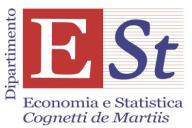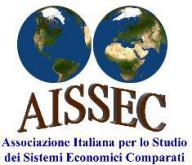17 | DECEMBER 2020
Edited by Xieshu Wang and Marta Marson, University of Turin and OEET
With global progress in trade volume, economic activities, technology development and social capital, the general living standards have been improving continuously and many people in less developed zones have come out of extreme poverty. Income inequality between countries has also improved in the last 25 years, but this is mostly due to strong economic growth in China and other emerging economies in Asia. Income inequality within countries instead has become worse. Today, 71% of the world’s population live in countries where inequality has grown. Up to 30% of income inequality is due to inequality within households, and progress in gender equality, for example in the reduction of salary gaps, is uneven across countries and sectors[1].
By Roberto Roson[*]
Introduction
This paper presents an empirical exercise, aimed at investigating the implications on poverty and income distribution of a reference scenario (SSP2) of economic development. Shared Socioeconomic Pathways (SSPs) are scenarios of projected socioeconomic global changes up to 2100, by the International Institute for Applied Systems Analysis (IIASA). Under the SSP2 “Middle of the road” scenario, the world follows a path in which social, economic and technological trends do not shift markedly from historical patterns; income inequality persists or improves only slowly. It does so by coupling a dynamic general equilibrium model of the global economy, specifically designed to capture structural change dynamics in the medium and long run, with detailed micro data on household income in six countries: Albania, Bolivia, Ethiopia, Malawi, Nicaragua and Vietnam. It also considers an alternative scenario of accelerated international trade integration, with a higher degree of trade openness.
Ivan Belokurov, Olga Demidova and Marcello Signorelli [*]
Introduction
Covid-19 shock is determining significant effects on inequality (e.g. Ghosh, 2020) and the importance of investigating inequality is reinforced by the pandemic. In this contribution some results of a study on the dynamics of inequality in a large set of countries in the past two decades are briefly presented; in our research we consider both the gross national income per capita (GNI in PPP) in 189 countries and the human development index (HDI) in 179 economies as measures of inequality, including both developing and developed countries.
Elena Paglialunga, Andrea Coveri and Antonello Zanfei[*]
Introduction
Relatively scanty research exists on the impact of climate change on economic disparities within countries. Accordingly, we explore the links between changes in climate conditions and within-country inequality and stress the relevance of some key structural factors conditioning the ability of the economies to deal with climate events. Two distinctive features of our work are worth mentioning. First, we focus on the agriculture sector, as it is one of the most important channels through which climate change might affect inequality. This emphasis on the agricultural channel highlights that emerging and least developed economies are the most vulnerable to the negative impacts of climate change – even though they have contributed less to climate change itself. Second, we use data on foreign direct investments (FDIs) to assess the role of the economic diversification across global value chain (GVC) activities as an important mediating factor affecting countries’ ability to react to climate change-induced inequality.
Our activities
-
11th OEET Workshop Programme
Global Trade Shocks and Geopolitical Uncertainty: Implications for Food Security in Emerging...









